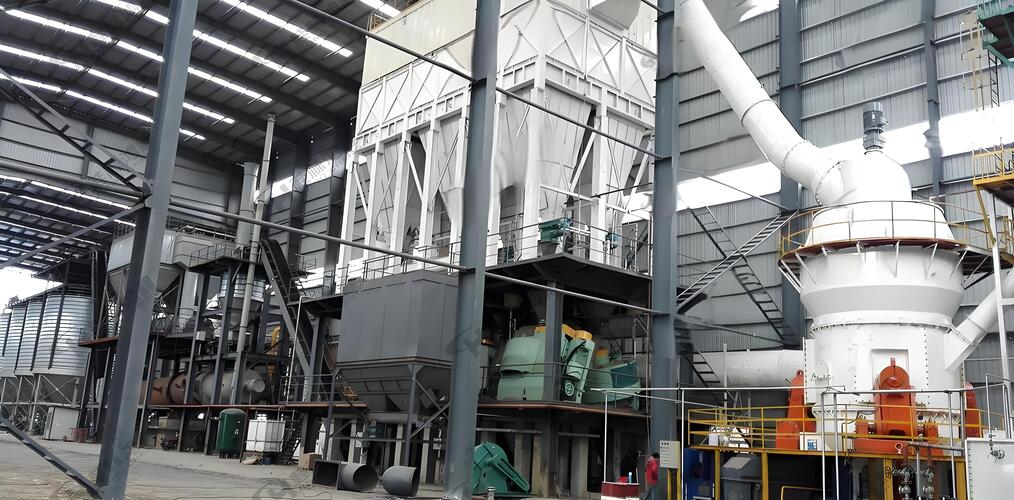Modified Calcium Hydroxide: Enhanced Dispersion in Waste TBP Treatment
News 2025-03-24
Introduction
Calcium hydroxide (Ca(OH)₂), a common inorganic compound, is widely used in environmental protection, construction materials, and chemical industries. However, traditional calcium hydroxide exhibits poor dispersion and stability in organic solvents, especially when treating waste tributyl phosphate (TBP), where it tends to settle and stratify, affecting treatment efficiency. This article details the preparation methods of modified calcium hydroxide and its application in waste TBP treatment, focusing on how modification enhances the dispersion and stability of calcium hydroxide.

Basic Properties of Calcium Hydroxide
Calcium hydroxide is a white powder, slightly soluble in water, and possesses alkaline properties. It is commonly used in wastewater treatment applications, flue gas desulfurization, and construction materials.. However, traditional calcium hydroxide has poor dispersion in organic solvents, leading to agglomeration and sedimentation, which limits its effectiveness in certain specialized applications.
Preparation Methods of Modified Calcium Hydroxide
Materials and Instruments
The materials required for preparing modified calcium hydroxide include calcium oxide (CaO), bisphenol A, anhydrous ethanol, emulsifier OP-4, tributyl phosphate (TBP), and kerosene. The experimental instruments include a heating magnetic stirrer, circulating water vacuum pump, electronic balance, ultrasonic cleaner, vacuum drying oven, scanning electron microscope (SEM), X-ray diffractometer (XRD), and Fourier-transform infrared spectrometer (FT-IR).
Preparation Steps
- Dissolving Bisphenol A: Weigh a certain amount of bisphenol A and dissolve it in 5 mL of anhydrous ethanol for later use.
- Mixing Reaction: Place 10 g of calcium oxide powder into a three-neck flask, and evenly drip the dissolved bisphenol A ethanol solution onto the calcium oxide powder. Stir slowly with a glass rod to ensure uniform mixing of calcium oxide and bisphenol A.
- Reaction and Filtration: Introduce cooling water, start stirring and heating, and slowly add 200 mL of deionized water to the three-neck flask. React at a certain temperature for a period, then cool to 60°C and filter while hot.
- Drying: Vacuum dry at 60°C to obtain the bisphenol A-modified calcium hydroxide product.
Characterization Methods
The structure of modified calcium hydroxide is characterized using XRD, SEM, and FT-IR. XRD is used to analyze the crystal structure, SEM to observe particle morphology and distribution, and FT-IR to detect changes in surface functional groups.
Characterization Results of Modified Calcium Hydroxide
XRD Analysis
The XRD spectra show that the main diffraction peaks of modified calcium hydroxide closely match the standard card (78-0315), indicating that the sample is a relatively pure calcium hydroxide crystal. The crystallinity of modified calcium hydroxide is lower than that of commercial and newly prepared calcium hydroxide, suggesting smaller crystal particles.
SEM Analysis
SEM images reveal that the particle size distribution of modified calcium hydroxide is more uniform, with less agglomeration between particles. The coating of bisphenol A on the surface of calcium hydroxide enhances the spatial resistance between particles, effectively preventing particle bridging.
FT-IR Analysis
The FT-IR spectra show that modified calcium hydroxide exhibits a free hydroxyl characteristic peak at 3675 cm⁻¹, a condensed hydroxyl characteristic peak at 3406 cm⁻¹, and an aromatic C-H stretching vibration absorption peak at 3005 cm⁻¹. The appearance of these characteristic peaks confirms the successful modification of calcium hydroxide by bisphenol A, improving its compatibility with organic solvents.
Application of Modified Calcium Hydroxide in Waste TBP Treatment
Preparation of Emulsion Suspension
At room temperature, prepare a simulated waste TBP extractant with a volume ratio of 3:7 for tributyl phosphate and kerosene. (Note: For standard water treatment processes using calcium hydroxide, see our calcium hydroxide for water treatment solutions.). Measure 100 mL of the simulated waste TBP extractant into a beaker, add 1.5 g of emulsifier OP-4 under stirring at 200 r/min, stir for 10 minutes, then add 35.2 mL of water and continue stirring for another 10 minutes. Slowly add 10.7 g of unmodified calcium hydroxide or calcium hydroxide modified under different conditions, and stir for 10 minutes to obtain the emulsion suspension.
Stability Analysis
Observe the particle size and distribution of calcium hydroxide in the emulsion suspension using an optical microscope, and record the changes in emulsion volume over time. The results show that in the emulsion suspension prepared with modified calcium hydroxide, the calcium hydroxide particles are smaller and more uniformly distributed, with no significant agglomeration, and the emulsion volume remains stable for up to 80 hours.
Effect of Bisphenol A Mass on Calcium Hydroxide Stability
Keeping other conditions constant, the effect of different bisphenol A masses on the stability of the emulsion suspension is investigated. The results indicate that when the bisphenol A mass is 1.5 g, the dispersion and stability of modified calcium hydroxide are optimal. Too little or too much bisphenol A negatively affects the modification.
Effect of Modification Reaction Temperature and Time on Calcium Hydroxide Stability
Keeping other conditions constant, the effects of different modification reaction temperatures and times on the stability of the emulsion suspension are examined. The results show that at a reaction temperature of 75°C and a reaction time of 1.5 hours, the dispersion and stability of modified calcium hydroxide are optimal.
Conclusion
By modifying calcium hydroxide with bisphenol A, its dispersion and stability in waste TBP treatment are significantly improved. This advancement complements traditional calcium hydroxide applications in water treatment, offering enhanced performance across environmental industries.. The modified calcium hydroxide particles are better dispersed in the emulsion suspension, with smaller particle sizes, more uniform distribution, and no significant agglomeration. The emulsion volume remains stable for up to 80 hours.
High-Quality Calcium Hydroxide from JinTai Materials Factory
JinTai Materials Factory is committed to providing high-quality calcium hydroxide products, widely used in environmental protection, construction materials, and chemical industries. Our products undergo strict quality control to ensure excellent performance in various applications. For more information, please visit our website or contact our sales team.



